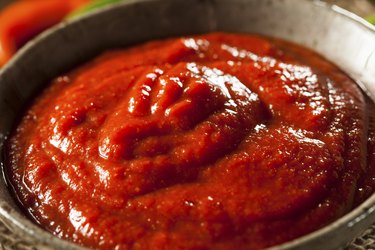
A fresh container of salsa, whether you made it yourself or purchased it from a store, has a shorter shelf life than home or commercially canned salsa. Mold, yeast and some bacteria can survive and reproduce even in the higher acidity found in most salsa varieties. Understanding the symptoms of spoilage can help prevent foodborne illness, although you can't always see, taste or smell all signs of spoiled foods.
Homemade Salsa
Video of the Day
Homemade salsa typically remains good for four to seven days when kept in a sealed container in the refrigerator. Visible mold, an off odor or color, or a film or slimy coating on the surface of the salsa all indicate it has spoiled. Using fresh ingredients and avoiding soft or overripe tomatoes can help prevent premature food spoilage. Refrigerate promptly and keep the container sealed to minimize spoilage.
Video of the Day
Storebought Salsa
Fresh containers of store-bought salsa, such as from a deli counter, aren't immune to spoilage. Symptoms are similar to homemade salsa and include mold, odor and color issues, or a film on the surface. Keep the salsa refrigerated and follow the expiration or use-by date stamped on the container to minimize spoilage concerns. If the container produces foam or is leaking, the salsa is likely spoiled and you should throw it out. Any salsa that doesn't look, smell or taste right should go in the trash, even if it's well before the use-by date.